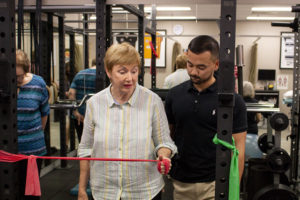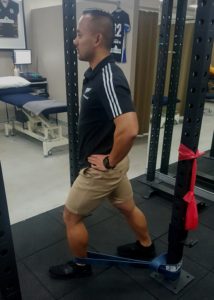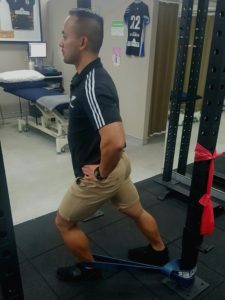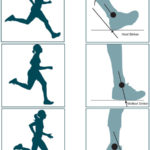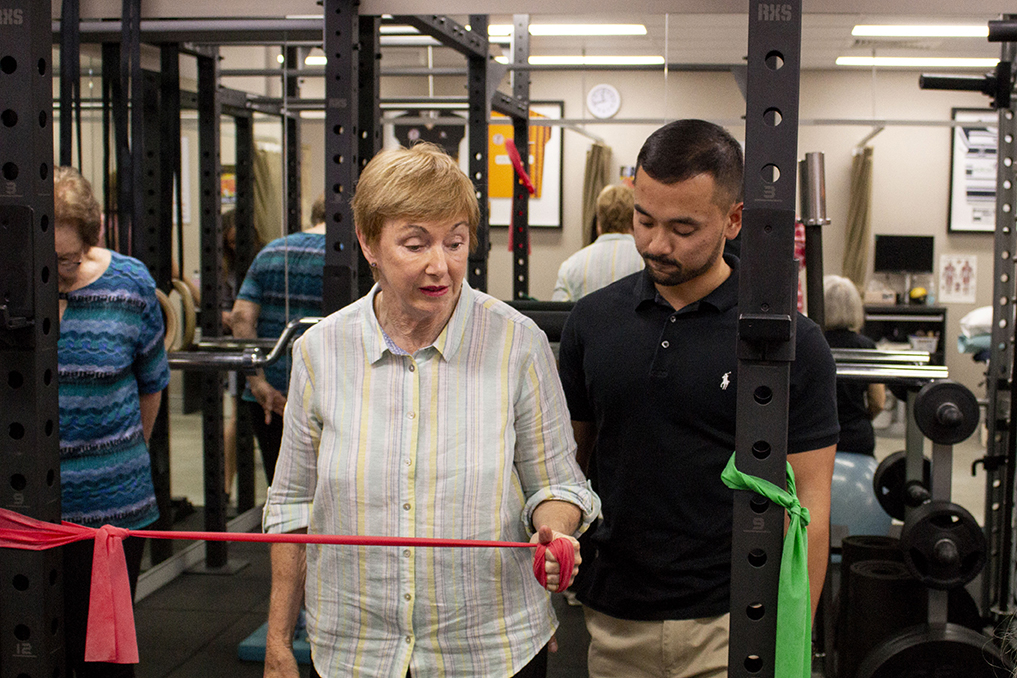
Power bands, Physiotherapy and Joint Stiffness
Power Bands and Joint Stiffness
A common symptom of many injuries is joint stiffness. This can often occur after the inflammation from an injury has settled and can be debilitating. Stiffness can also put a joint in an abnormal position. A stiff joint anywhere in the body can significantly alter movement patterns and consequently cause further injuries. Targeting joint stiffness is key to the rehabilitation and recovery process.
One of the tools our physiotherapists use to decrease joint stiffness is mobilisation. This is the act of stabilising one bone of a joint and subsequently gliding the other bone in certain directions. This effectively breaks adhesion in the joint supporting structures such as ligaments and aims to restore full range of motion.
The use of Power Band for Joint Stiffness
An effective tool to use with joint mobilisation is the power band. This is a thick circular rubber band aimed primarily at providing resistance to certain movements and effectively work targeted muscle groups. However, the power band is also effective at aiding mobilisation.
Two common joints that the power band can help improve joint mobility in are the hip and ankle joints.
Improving ankle range with the Power Band
A common restriction for ankle mobility is the loss of dorsiflexion (bending the foot towards the head). This is a common occurrence following many injuries, particularly after ankle sprains. This particular movement is crucial to everyday walking as it allows us to clear our steps. Without this mechanism, we are prone to falls.
To use the power band to improve ankle dorsiflexion range, follow the below steps:
- Hook the power band on a stable pole.
- Place the affected leg on the inside of the power band and place the band at the level of the ankle.
- Step forward with the affected leg into a lunge position and move the leg forward enough to apply a bit of resistance with the band
- With the food firmly planted on the ground, lean forward to track the knee over the toes producing a bend in the ankle joint.
- Repeat this motion either on and off or alternatively sustain the pressure at end range.
Improving hip range with the Power Band
The use of power band mobilisation can also greatly improve a common issue with squatting which is too much forward or anterior translation of the hip. This means that the amount of joint space or ‘movability’ decreases and can lead to issues such as hip impingement which can be very painful!
To correct this mechanism, we can use the power band and follow the below steps:
- Hook the power band on a stable pole
- Place the affected leg on the inside of the power band and place the band at the level of the hip.
- Step forward with the opposite leg and lean down into a lunge position so that you feel the power band pull the leg backwards.
- Repeat this motion either on and off or alternatively sustain the pressure at end range.

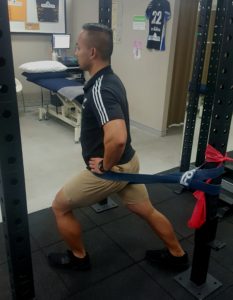
Power band can be used for effective joint mobilisation. The same principles can be applied to other joints in the body. Suffering from joint stiffness issues, don’t hesitate to see Pivotal Motion to get this treated sooner rather than later.
The exercise physiologists at Pivotal Motion are fully trained and qualified to help with any of your musculoskeletal and sporting injuries. Located in North Brisbane. Call us today on 07 3352 5116 or book an appointment with the physio Brisbane communities trust with their movement via the link below.

